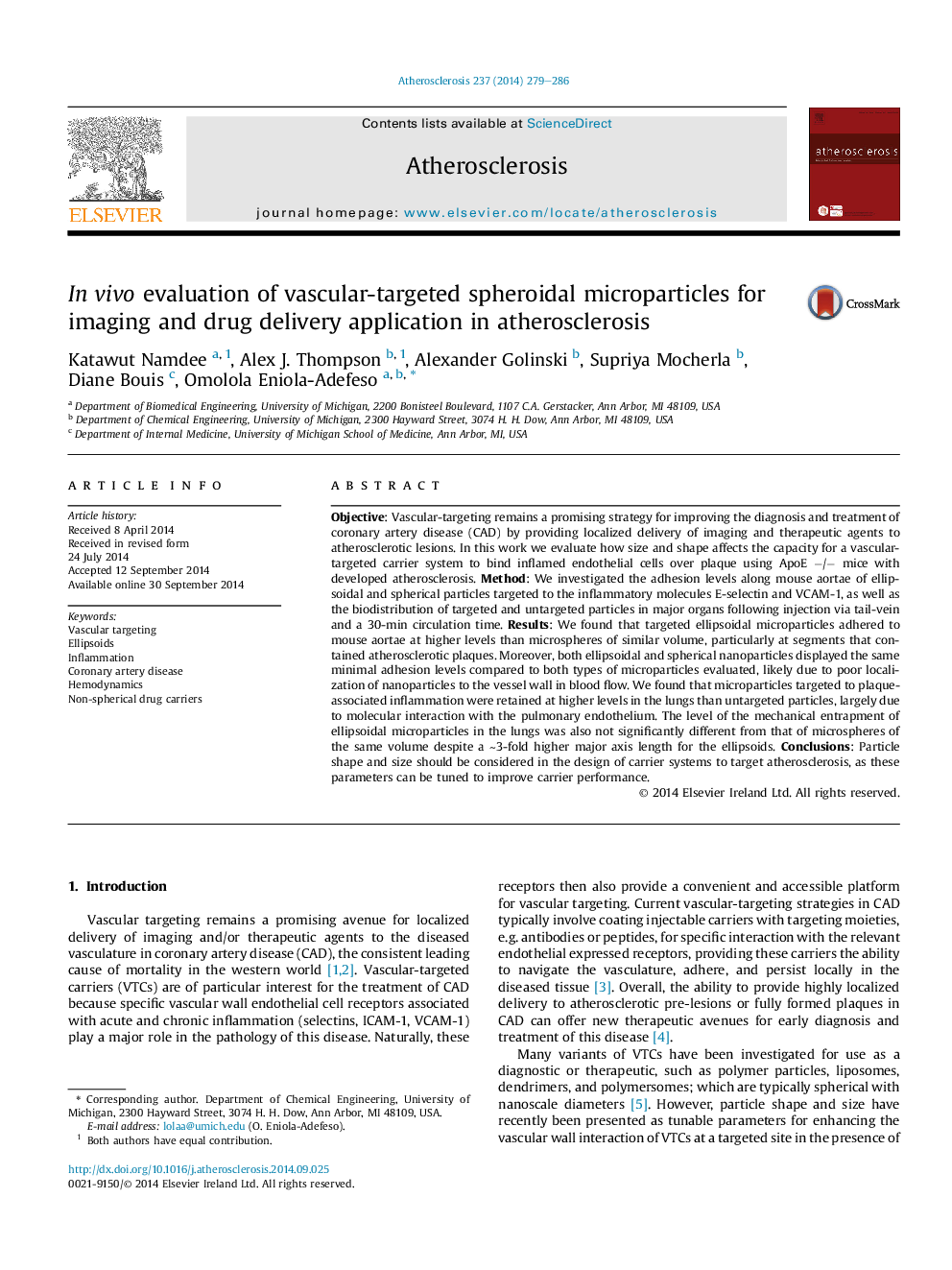| Article ID | Journal | Published Year | Pages | File Type |
|---|---|---|---|---|
| 5945024 | Atherosclerosis | 2014 | 8 Pages |
â¢We investigate how particle shape affects plaque targeting in atherosclerotic mice.â¢Microrods targeted developing plaques more efficiently than microspheres.â¢Microparticles displayed better targeting than nanoparticles, regardless of shape.â¢Nanorods displayed no improved targeting compared to nanospheres.â¢Particle size and shape can be tuned to improve targeting to inflamed aorta.
Objective: Vascular-targeting remains a promising strategy for improving the diagnosis and treatment of coronary artery disease (CAD) by providing localized delivery of imaging and therapeutic agents to atherosclerotic lesions. In this work we evaluate how size and shape affects the capacity for a vascular-targeted carrier system to bind inflamed endothelial cells over plaque using ApoEÂ â/â mice with developed atherosclerosis. Method: We investigated the adhesion levels along mouse aortae of ellipsoidal and spherical particles targeted to the inflammatory molecules E-selectin and VCAM-1, as well as the biodistribution of targeted and untargeted particles in major organs following injection via tail-vein and a 30-min circulation time. Results: We found that targeted ellipsoidal microparticles adhered to mouse aortae at higher levels than microspheres of similar volume, particularly at segments that contained atherosclerotic plaques. Moreover, both ellipsoidal and spherical nanoparticles displayed the same minimal adhesion levels compared to both types of microparticles evaluated, likely due to poor localization of nanoparticles to the vessel wall in blood flow. We found that microparticles targeted to plaque-associated inflammation were retained at higher levels in the lungs than untargeted particles, largely due to molecular interaction with the pulmonary endothelium. The level of the mechanical entrapment of ellipsoidal microparticles in the lungs was also not significantly different from that of microspheres of the same volume despite a â¼3-fold higher major axis length for the ellipsoids. Conclusions: Particle shape and size should be considered in the design of carrier systems to target atherosclerosis, as these parameters can be tuned to improve carrier performance.
Graphical abstractDownload high-res image (157KB)Download full-size image
